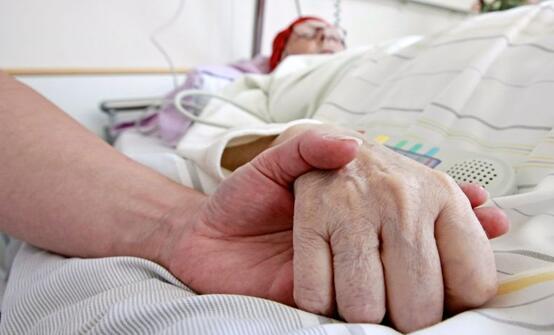Stanford University artificial intelligence algorithm accurately predicts 90% of human outcomes
A research team at Stanford University uses artificial intelligence algorithms to predict patient death, hoping to improve the timing of hospice care in critically ill patients. In the test, this system proved to be very accurate, correctly predicting the death outcome in 90% of cases. However, although the system can predict when a patient may die, it still cannot tell the doctor how it came to a conclusion.
Predicting death is very difficult. Doctors must consider a range of complex factors, from the patient's age and family history to the response to the drug, as well as the nature of the disease itself. To complicate matters, doctors must struggle with their own conceit, prejudice or unconsciousness to assess how much the patient has. Sometimes doctors can accurately predict, but sometimes patients may delay for months (if not years), whether it is premature or late to predict death, is not conducive to hospice care.
This brings problems to the precise arrangement of hospice care. Often, when a patient is unlikely to live for more than a year, treatment is transferred to a hospice group who tries to keep the patient as far away as possible from the pain in the last few days or months. To this end, they strive to manage the patient's pain, nausea, appetite and confusion, provide psychological and spiritual support, while respecting the social, cultural and spiritual needs of patients and their families.
But if a patient transitions to hospice care too late, they are likely to miss this important stage of care. If it is too early, it will bring unnecessary pressure on the medical system.

Often, advanced disease can turn into a medical crisis and patients will eventually be in the intensive care unit. There, the situation has developed wildly, leading to more and more interventions, often unable to provide good services to patients and their families,†Ken Jung, a medical research scientist at Stanford University and co-author of the new study, told Gizmodo. The hospice team One of the goals is to have a conversation with the patient so that the patient can think carefully and express their preferences before the crisis. It is worth noting that even if the patient does not die in the future, these behaviors are appropriate. The purpose of hospice care is to allow patients to benefit from these conversations.
Jung said that this unmet need was first discovered decades ago, and the survey showed that 80% of Americans want to die at home, but only 35% do so. He said that the situation has improved, but we "have a long way to go."
In China, according to the data, about 7 million people go to the end of life every year, but the hospice care provided by the society can only meet about 15% of the demand.
The report of the British "Economist" Information Department also believes that the supply of hospice care services in China cannot keep up with the aging of the population. According to the 2015 "Death Quality Index" of the Economist Intelligence Unit, China is in 80 countries. Ranked 10th in the bottom.
The timing is just right, which is why Anand Avati and his team at Stanford University have developed an AI-based system. The death prediction algorithm is not intended to replace the doctor, but rather provides a tool to improve the accuracy of the prediction. In addition to improving the timing of hospice care, the system can alleviate the burden on doctors in predicting patient outcomes, a time-consuming and laborious process.

“The problem we have to solve is that only a small percentage of patients who can benefit from hospice actually accept it, in part because they are found too late, partly because of the shortage of [human resources] in hospice care services. Early detection.†Avati told Gizmodo, “We are trying to solve this problem.â€
The system uses an artificial intelligence called "deep learning," in which neural networks learn from large amounts of data. In this case, the system is based on data from the Electronic Health Record (EHR) of adult and child patients, either Stanford Hospital or Lucille Packard Children's Hospital. After analyzing 2 million records, the researchers identified 200,000 patients for this program. Researchers are "agnostic" about the type of disease, stage of disease, degree of admission (intensive care unit, and non-intensive care unit). All of these patients have relevant case reports, including diagnosis, number of scans ordered, type of procedure performed, number of days of hospital stay, medication used, and other factors.
The deep learning algorithm studied 160,000 case reports from these patients and gave instructions: “A given patient and date, using the patient's one-year EHR data, predicting the patient within 12 months from that date Death.†The system is trained to predict patient deaths in the next 3 to 12 months. Patients with a life expectancy of less than 3 months are not considered, as this will result in insufficient preparation for hospice care.

Mastering the new technology, the task of the algorithm is to evaluate the remaining 40,000 patients. It did a good job of successfully predicting the deaths of 9 of 10 cases over a period of 3 to 12 months. Approximately 95% of patients have a lower likelihood of dying during this time and have a life span of more than 12 months. Pilot studies have proven successful, and researchers now want their systems to be more widely used.
Stephanie M. Harman, associate professor of medical science at Stanford University and co-author of the new study, told Gizmodo: "This is a complex diversion tool to improve hospice as a means of prejudging." The goal is not to convey a time of death,†adding that the system addresses the issue of “identifying critically ill patients who have not addressed the need for hospice careâ€.
Jung added: “We generally believe that this approach is critical to the safe, effective and ethical use of machine learning in a clinical setting. We think it is almost always better, except for very niche applications. More important is to let the people who are coming to the limit know."
During the pilot study, the researchers noted some of the shortcomings of the system and needed to be addressed before further use.
Jung said: "For example, it turns out that it is very difficult to find a suitable time and place for doctors with hospice to communicate with hospital staff in a timely manner." "It emerged in the pilot study." Another detail is that we found that some of the data we assumed would not appear in the system - at least when it was used."
Jung said the pilot study was designed to study these issues over and over again to determine if it worked smoothly and worked as a whole in the expected direction.

Importantly, while the system can make predictions and alert medical practitioners to the need for hospice care, the system cannot tell the doctor why there is a precaution, or the type of medical care the patient may need. This situation is similar to DeepMind's AlphaGo system, which now beats the world champion in chess and Go. Experts say that the system's approach is "foreign" and unpredictable, and the failed masters are completely confused. This is what AI developers call the "black box" problem. When a machine asks the answer or solution to a problem, there is no clear way to know how to solve the problem.
Fortunately, the decisions made by the Stanford algorithm can be studied.
Moreover, this system can still get better. At present, it only obtains data from patients in two hospitals, so it is limited and somewhat biased. Looking to the future, the system will be more suitable for this task through more diversified data analysis and a more sophisticated deep learning model architecture.
So the good news is that this system is predicting when we die more and more accurately. That's right, it's disturbing, but it's a good thing if you can get better hospice care.
Erythritol For Chewing Gum,Erythritol Reddit,Pyure Erythritol,Swerve Confectioners Sugar Substitute
Ningxia Eppen Biotec CO.,LTD , https://www.nxeppen.com